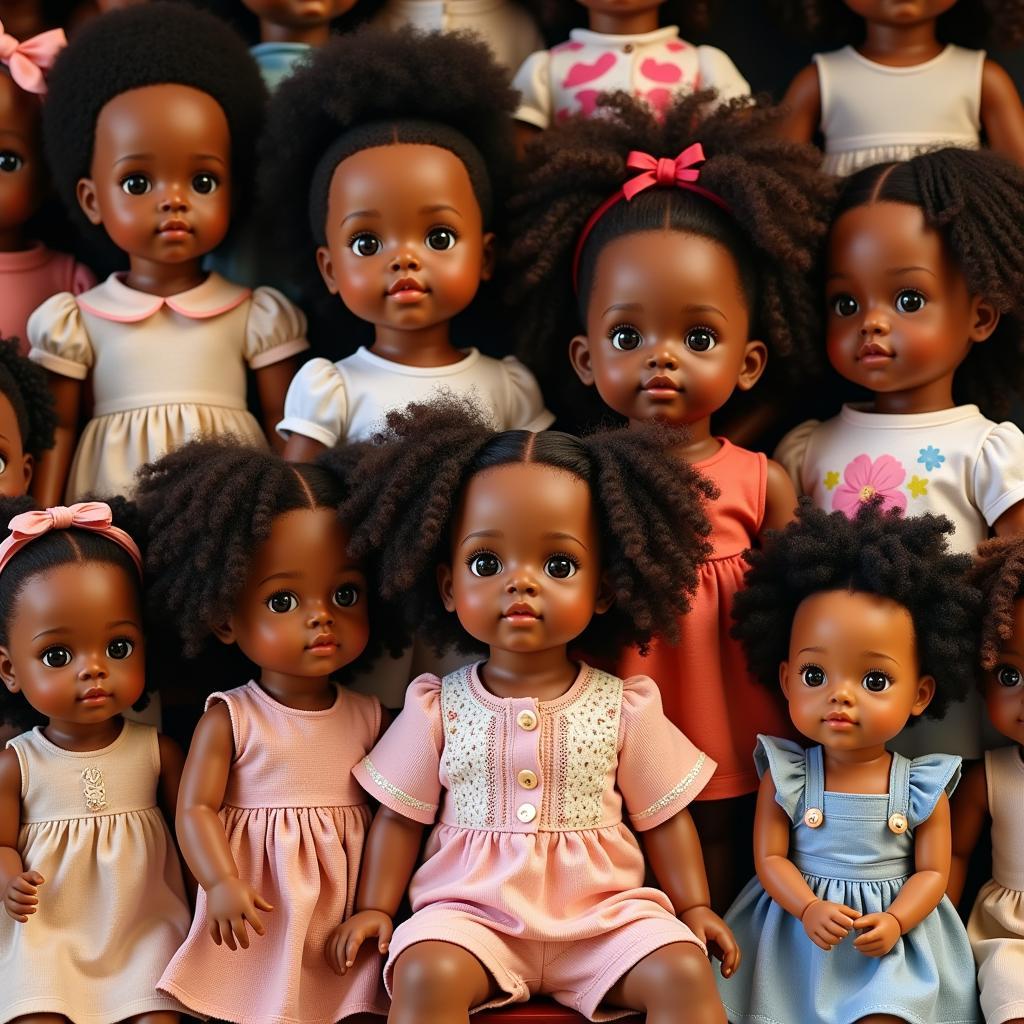African Hair Growth Tips: Unlocking the Secrets to Long, Healthy Hair
African hair, in all its diverse glory, is often misunderstood. From tightly coiled curls to loose waves, its unique texture and structure require specific care to unlock its full growth potential. This article dives deep into effective African Hair Growth Tips, providing you with the knowledge and tools you need to nurture your hair and achieve the length and health you desire. Let’s embark on this journey together, celebrating the beauty and resilience of African hair. See our page on African hair growth for more information.
Understanding Your Hair Type: The Foundation of African Hair Growth
Knowing your hair type is the first crucial step. Is it 4c, 4b, 4a, 3c, or something else entirely? Each type has its own characteristics and requires tailored care. Understanding your hair’s porosity (its ability to absorb moisture), density (the number of hairs on your scalp), and texture (the feel of your hair strands) is essential. This knowledge will help you choose the right products and techniques. What works for your friend might not work for you.
Nourishing Your Hair from Within: Diet and Hydration
Healthy hair starts from the inside out. Just like your body needs proper nutrition to thrive, so does your hair. A balanced diet rich in protein, vitamins (especially A, D, and E), and minerals like iron and zinc is crucial for hair growth. Don’t forget to stay hydrated! Water is essential for keeping your hair moisturized and promoting healthy growth. Think of it as watering a plant; consistent hydration is key to vibrant, flourishing locks.
Gentle Cleansing and Conditioning: The Cornerstones of Hair Care
Washing your hair regularly, but not too frequently, is essential. Over-washing can strip your hair of its natural oils, leading to dryness and breakage. Choose a gentle sulfate-free shampoo and a moisturizing conditioner specifically formulated for African hair. Focus on cleansing the scalp and conditioning the ends of your hair, where dryness and damage tend to be most prominent.
The Power of Protective Styling: Minimizing Manipulation and Breakage
Protective styles, such as braids, twists, and weaves, can be a great way to promote hair growth by minimizing manipulation and breakage. However, it’s important to avoid styles that are too tight, as this can lead to traction alopecia (hair loss caused by pulling). Also, ensure your hair is properly moisturized before installing a protective style, and avoid keeping it in for too long.
Moisturizing and Sealing: Locking in Hydration for Healthy Hair
Moisturizing is essential for African hair, which tends to be drier than other hair types. Use a water-based moisturizer and seal it in with an oil or butter to prevent moisture loss. This process, known as the LOC (Liquid, Oil, Cream) or LCO (Liquid, Cream, Oil) method, helps to keep your hair hydrated and soft. Experiment to see which method works best for your hair.
Regular Trims: Removing Split Ends for Healthy Growth
While it might seem counterintuitive, regular trims are essential for healthy hair growth. Split ends can travel up the hair shaft, causing further damage and breakage. By trimming your hair regularly, you prevent split ends from hindering your hair’s growth potential.
Natural Remedies: Harnessing the Power of Nature
Many natural ingredients, such as shea butter, aloe vera, and coconut oil, can benefit African hair growth. Shea butter is known for its moisturizing and protective properties, while aloe vera can soothe the scalp and promote hair growth. Coconut oil can penetrate the hair shaft, providing deep conditioning. Experiment with different natural remedies to find what works best for you. If you’re in Dublin and looking for hair care expertise, consider checking out an African hair salon Dublin.
Avoiding Heat Styling: Minimizing Damage and Breakage
Excessive heat styling can damage African hair, leading to dryness, breakage, and stunted growth. Try to air dry your hair whenever possible, and if you must use heat, use a heat protectant spray and keep the temperature low. Embracing your natural texture is a great way to minimize heat damage and promote healthy hair growth. Consider a trendy African bob cut hairstyle pictures for a stylish and low-maintenance look. For more tips on African American hair growth, see our page on African American hair growth tips.
Conclusion: Patience and Consistency are Key to African Hair Growth
Growing healthy, long African hair takes time and patience. There’s no magic bullet, but by following these tips and being consistent with your hair care routine, you can unlock your hair’s full growth potential. Remember to listen to your hair, pay attention to its needs, and adjust your routine accordingly. Embrace the journey and enjoy the process of nurturing your beautiful, unique hair.
FAQ:
- How often should I wash my African hair? Washing once a week or every two weeks is usually sufficient.
- What are some good protective styles for African hair? Braids, twists, cornrows, and weaves are all popular protective styles.
- How can I prevent breakage? Gentle handling, moisturizing, and avoiding heat styling can help prevent breakage.
- Is it necessary to trim my hair regularly? Yes, regular trims are essential for removing split ends and promoting healthy growth.
- What are some natural ingredients that can benefit African hair growth? Shea butter, aloe vera, and coconut oil are all beneficial for African hair.
- How long does it take to see results? Hair growth varies from person to person, but with consistent care, you should start to see results within a few months.
- What if I’m still not seeing results? Consult a trichologist or dermatologist who specializes in African hair.
When you need assistance, please contact us by Phone: +255768904061, Email: [email protected] Or visit us at: Mbarali DC Mawindi, Kangaga, Tanzania. We have a 24/7 customer care team.


